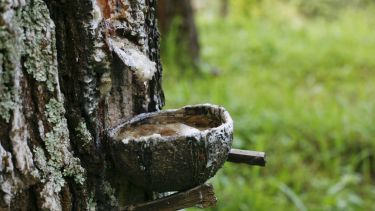- New research from scientists including the University of Sheffield has found the impact of the global rubber trade on deforestation has been underestimated
- Scientists behind the research say equitable and sustainable solutions are needed without delay to protect forests, but also to support smallholders to increase yields
- The study highlights the importance of investigating the effects of cash crops on the environment
Two groundbreaking studies by an international team, published in Nature and Conservation Letters, demonstrate that the impact of the global rubber trade on forests has been serially and substantially underestimated.
Using the latest satellite technology and cloud computing, and a review of more than 100 case studies, the new research has revealed that rubber-driven forest loss is significantly larger than previously reported estimates, which have been widely used to inform policy. Now, scientists behind the research say equitable and sustainable solutions are needed without delay.
Led by the Royal Botanic Garden Edinburgh (RBGE), the satellite imagery-based paper in Nature shows that rubber-related deforestation could be three times greater than previously believed, and since the 1990s has impacted an area as large as Switzerland.
A separate systematic review of case studies and analysis of recent trends in rubber area and yield, published in Conservation Letters, also indicated that rubber is regularly linked to deforestation.
Both studies emphasise that while it is critical to halt deforestation associated with rubber, it is vital that smallholders, who account for 85 per cent of natural rubber production, are not marginalised by regulations.
Dr Maria Wang, from the Grantham Centre for Sustainable Futures at the University of Sheffield and co-author of the study published in Conservation Letters, said: “Rubber smallholders and industry understandably fear extra burdens placed on them by regulations. However, these studies show that the biodiversity impacts and deforestation from rubber cannot be ignored and that there is a need for solutions that work for smallholders, without putting any more pressure on the planet.”
Warning that, as demand grows and yields stagnate, continued deforestation for rubber is to be expected, lead author Dr Eleanor Warren-Thomas, from Bangor University, commented: “Our analysis shows substantial expansion of rubber plantations has occurred in many producer countries since 2010, with particularly rapid increases in new locations such as Cote d’Ivoire.
“Some 2.7 million to 5.3 million hectares of additional harvested area could be needed to meet industry estimates of demand by 2030. It is critical that existing rubber producers are supported to improve their yields and maintain production, to avoid ongoing expansion of plantation area.”
Dr Yunxia Wang, a researcher from RBGE and first author of the study in Nature, explained: “Rubber was already known to lead to forest loss, but quantifying the damage has been challenging. Because it is difficult to distinguish from natural forest on satellite imagery, it has received reduced attention when looking at the losses caused by commercial plantations. However, thanks to expanding earth observation and computing technology, there are increasing opportunities to map ‘difficult’ commodities. The results have been sobering.”
Underscoring the significance of this pioneering research, Professor Peter Hollingsworth, Deputy Keeper and Director of Science at RBGE commented: “The study highlights the importance of rigorous quantifications of the effects of cash crops on the environment. This is now increasingly possible thanks to advancements in earth observation technology.”
Dr Ahrends, senior author of the Nature paper and Head of Genetics and Conservation at RGBE, concluded: “While it is encouraging to see an increasing number of initiatives and policy changes that aim to halt commodity-driven forest loss, there is a risk of inflexible regulation marginalising the poor as only wealthy rubber producers and traders can afford to pay remote-sensing companies to verify that goods are deforestation-free.
“We are, therefore, working with smallholder initiatives and other key players in the sector, including the Forest Stewardship Council ®, ZSL, and the Global Platform for Sustainable Natural Rubber, to ensure that our rubber and deforestation maps are widely and easily accessible to all stakeholders, in particular to smaller economic players.”
Research partners with the Royal Botanic Garden Edinburgh and Bangor University on the two papers were Kunming Institute of Botany, China; Xishuangbanna Tropical Botanical Garden, China; Stockholm Environment Institute, University of York; University of Bern, Switzerland; Yunnan Academy of Social Sciences, China; International Institute for Applied Systems Analysis (IIASA), Austria; University of Sheffield.
Dr Maria Wang’s research has looked at the potential impact of future rubber plantations on biodiversity and has shown there is little room for new rubber plantations that would not impact species in the natural world.

